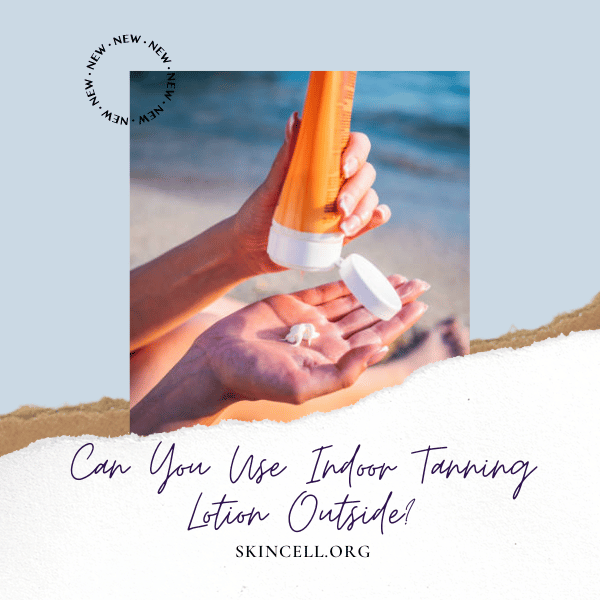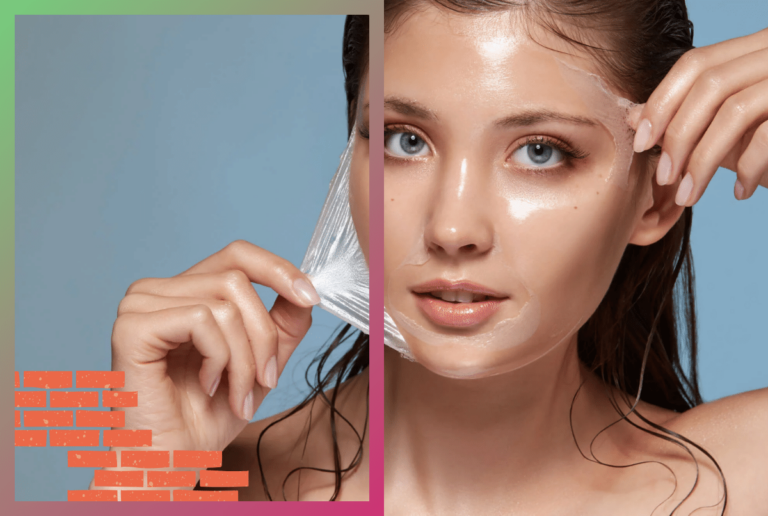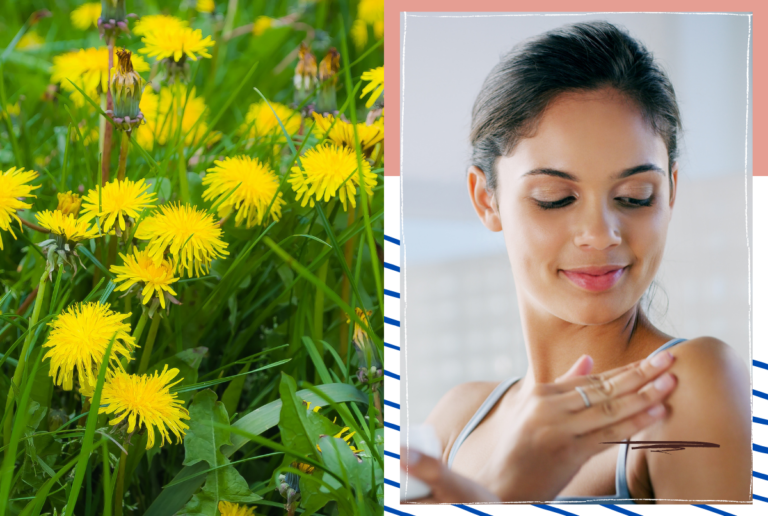Can You Use Indoor Tanning Lotion Outside?
Can you use indoor tanning lotion outside?
This question piques the curiosity of many who seek a radiant tan without the prolonged sun exposure. Indoor tanning lotions are crafted for use with tanning beds, raising the question of their suitability for outdoor tanning.
These lotions aim to deepen, darken, and extend the life of your tan, infused with ingredients that boost melanin production—the pigment responsible for skin color. They often include moisturizers and vitamins to nourish and protect your skin from the drying effects of tanning beds.
Understanding the nuances of indoor tanning lotions, how they interact with UV rays, and the differences between indoor and outdoor tanning products is crucial.
Well, we’ll be going over:
- What makes indoor tanning lotions unique, and how do they work with UV rays?
- Can these lotions provide any protection or benefits when used outdoors?
- What are the safety considerations and best application practices for using these lotions outside?
Let’s dive in.

Understanding Indoor Tanning Lotion
If you’re wondering if you can use indoor tanning lotion outside, it’s important to first understand what indoor tanning lotion is and how it works. Indoor tanning lotions are specially formulated to enhance the tanning process and provide a deeper, longer-lasting tan.
They contain a variety of ingredients that work together to help moisturize and protect your skin while also stimulating melanin production.
Purpose of Indoor Tanning Lotions
The purpose of indoor tanning lotions is to help you achieve a darker, more even tan while minimizing the risk of sunburn and skin damage. These lotions often contain ingredients that help to accelerate the tanning process, such as accelerators, tingles, and bronzing agents.
They also typically contain moisturizing ingredients that help to keep your skin hydrated and prevent it from drying out during the tanning process.
Key Ingredients in Indoor Tanning Lotions
Indoor tanning lotions can contain a variety of different ingredients, but some of the most common ones include:
- Dihydroxyacetone (DHA): This is a colorless chemical that reacts with the amino acids in your skin to produce a brownish color. It’s often used in self-tanning products as well.
- Bronzers: These are ingredients that help to enhance the color of your tan by providing an immediate, temporary color boost.
- Moisturizers: These are ingredients that help to keep your skin hydrated and prevent it from drying out during the tanning process.
- Accelerators: These are ingredients that help to stimulate melanin production in your skin, which can help you achieve a darker, more even tan.
- Tinglers: These are ingredients that create a tingling sensation on your skin, which can help to increase blood flow and stimulate melanin production.
Overall, indoor tanning lotions are specifically designed for use in tanning beds, and they may not be as effective or appropriate for use outside. If you do choose to use an indoor tanning lotion outside, be sure to check the label carefully and choose a product that is specifically designed for outdoor use.
Additionally, be sure to follow all sunscreen guidelines and take other precautions to protect your skin from the sun’s harmful rays.
The Science of Tanning
When it comes to tanning, there are a lot of factors to consider. One of the most important is the interaction between UV rays and your skin. Understanding this interaction is key to understanding how tanning lotions work and whether or not they can be used outside.
How Tanning Lotions Interact with UV Rays
Tanning lotions are designed to help you achieve a deeper, darker tan. They work by stimulating the production of melanin in your skin, which is the pigment that gives your skin its color.
The active ingredients in tanning lotions are typically designed to work with UV rays to enhance the tanning process.
UV rays can be broken down into two main types: UVB and UVA. UVB rays are the ones that cause sunburn, while UVA rays are responsible for aging and other damage to your skin. Tanning lotions typically work by enhancing the effects of UVB rays, which are the ones that are responsible for tanning.
The Role of Melanin in Tanning
Melanin is the pigment that gives your skin its color. It is produced by cells called melanocytes, which are located in the bottom layer of your skin. When your skin is exposed to UV rays, the melanocytes produce more melanin, which gives your skin a darker color.
The amount of melanin that your skin produces is determined by a number of factors, including your genetics, your skin type, and your exposure to UV rays. People with fair skin tend to produce less melanin than people with darker skin, which is why they are more prone to sunburn and other types of skin damage.
In conclusion, tanning lotions are designed to enhance the effects of UVB rays, which are the ones that are responsible for tanning. They work by stimulating the production of melanin in your skin, which gives your skin its color.
Whether or not you can use indoor tanning lotion outside depends on the specific product and its ingredients. It is important to read the label and follow the instructions carefully to avoid any potential side effects.
Differences Between Indoor and Outdoor Tanning Products
When it comes to tanning products, there is a significant difference between indoor and outdoor tanning lotions. While both products aim to give you that sun-kissed glow, they are formulated differently to cater to their respective environments.
Formulation Differences
Indoor tanning lotions are specifically designed to be used with tanning beds or sunlamps. These products contain ingredients that help enhance the tanning process by increasing melanin production in the skin.
They also contain moisturizers to keep the skin hydrated and prevent it from drying out under the intense heat of the tanning bed.
Outdoor tanning lotions, on the other hand, are formulated to protect the skin from the harmful effects of the sun’s ultraviolet (UV) rays. They contain broad-spectrum sunscreen that protects the skin from both UVA and UVB rays.
Outdoor tanning lotions also come in different SPF levels to provide varying degrees of sun protection.
SPF and Protection Factors
SPF stands for Sun Protection Factor, which is a measure of how well a sunscreen product can protect the skin from UVB rays. The higher the SPF number, the more protection it provides. For example, an SPF 30 sunscreen will block about 97% of UVB rays, while an SPF 50 sunscreen will block about 98% of UVB rays.
When looking for an outdoor tanning lotion, it’s important to choose one that has a broad-spectrum SPF of at least 30. This will ensure that your skin is protected from both UVA and UVB rays.
Additionally, it’s recommended to choose a water-resistant sunscreen if you plan on swimming or sweating, as this will ensure that the product stays on the skin longer.
In conclusion, indoor and outdoor tanning products differ in their formulation and intended use. While indoor tanning lotions aim to enhance the tanning process, outdoor tanning lotions are designed to protect the skin from the harmful effects of the sun.
When choosing a tanning product, it’s important to consider the environment you will be in and choose a product that provides adequate protection.
Safety and Skin Health Considerations
When it comes to using indoor tanning lotion outside, there are several safety and skin health considerations to keep in mind. While indoor tanning lotions are formulated to be used with indoor tanning beds, they may not be suitable for outdoor use.
Potential Risks of Outdoor Tanning with Indoor Lotions
Using indoor tanning lotion outside can increase your risk of sunburn, skin damage, and skin cancer. Indoor tanning lotions are formulated to enhance your tan while protecting your skin from the UV rays emitted by tanning beds.
However, they may not offer the same level of protection when exposed to natural sunlight.
Exposure to UV rays from the sun can cause skin damage, including premature aging, wrinkles, and sunspots. Additionally, using indoor tanning lotion outside can increase your risk of photosensitivity, which can cause rashes, hives, and other skin irritations.
Preventing Skin Damage and Premature Aging
To prevent skin damage and premature aging, it is important to take steps to protect your skin when spending time outdoors. One of the most effective ways to protect your skin is to wear protective clothing, such as hats, sunglasses, and long-sleeved shirts.
Additionally, you should always use a broad-spectrum sunscreen with an SPF of at least 30 when spending time outside. Look for sunscreens that contain antioxidants, aloe vera, and botanical extracts, which can help protect your skin from sun damage and soothe sensitive skin.
Finally, it is important to stay hydrated when spending time outside. Drinking plenty of water can help keep your skin healthy and prevent dehydration, which can exacerbate the effects of sun damage.
Overall, while indoor tanning lotions can be effective for use with tanning beds, they may not be suitable for outdoor use. To protect your skin and prevent skin damage and premature aging, it is important to take steps to protect your skin when spending time outside.
Proper Application Techniques
Achieving a flawless tan requires proper application techniques. Here are some tips to help you achieve an even tan and make it last longer.
Achieving an Even Tan
Before applying indoor tanning lotion, make sure your skin is clean and dry. Exfoliate your skin to remove any dead skin cells and ensure an even application. Apply a moisturizer to any dry areas, such as knees, elbows, and ankles, to prevent the lotion from clinging to these areas and creating dark spots.
When applying indoor tanning lotion, use a circular motion to ensure even coverage. Start from the bottom of your body and work your way up. Apply the lotion sparingly to areas that are naturally drier, such as your feet, ankles, and elbows.
Reapplication and Duration
Indoor tanning lotion is not a replacement for sunscreen. It does not provide protection against harmful UV rays. If you plan to spend time outside, make sure to apply sunscreen with a high sun protection factor (SPF) to protect your skin from sun damage.
If you plan to swim or sweat, choose a water-resistant sunscreen and reapply it every two hours. Reapply indoor tanning lotion every three to four days to maintain your tan. Make sure to hydrate your skin by drinking plenty of water to prevent it from becoming dry and flaky.
By following these proper application techniques, you can achieve an even tan and make it last longer. Remember to exfoliate, moisturize, and apply sunscreen to protect your skin from sun damage.
Frequently Asked Questions
Is there a difference between indoor and outdoor tanning lotions?
Yes, there is a difference between indoor and outdoor tanning lotions. Indoor tanning lotions are specifically designed for use with UV tanning beds, while outdoor tanning lotions are formulated for use in natural sunlight.
Indoor tanning lotions often contain ingredients that can cause skin irritation or damage when exposed to natural sunlight.
How does tanning lotion enhance the tanning process?
Tanning lotions contain ingredients that can help to accelerate the tanning process by increasing the production of melanin in the skin. Melanin is the pigment responsible for giving your skin its color. Tanning lotions can also help to keep your skin hydrated, which can make your tan last longer.
What are the potential risks of using tanning lotions?
Tanning lotions can cause skin irritation or allergic reactions in some people. Some tanning lotions may also contain ingredients that can cause skin damage or increase the risk of skin cancer. It is important to read the label carefully and follow the instructions for use.
Are there specific tanning lotions recommended for outdoor use?
Yes, there are specific tanning lotions recommended for outdoor use. Outdoor tanning lotions often contain sunscreen to protect your skin from the harmful effects of UV radiation. It is important to choose a tanning lotion with a high SPF (sun protection factor) to ensure that your skin is protected.
Can indoor tanning lotions with bronzers be applied before sun exposure?
It is not recommended to use indoor tanning lotions with bronzers before sun exposure. Bronzers can cause streaking or uneven coloration when exposed to natural sunlight. It is best to use a tanning lotion specifically designed for outdoor use.
Is it safe to use tingle tanning lotions outdoors?
Tingle tanning lotions can cause a tingling or warming sensation on the skin, which can be uncomfortable for some people. It is not recommended to use tingle tanning lotions outdoors, as they can cause skin irritation or damage when exposed to natural sunlight.
It is best to use a tanning lotion specifically designed for outdoor use.






